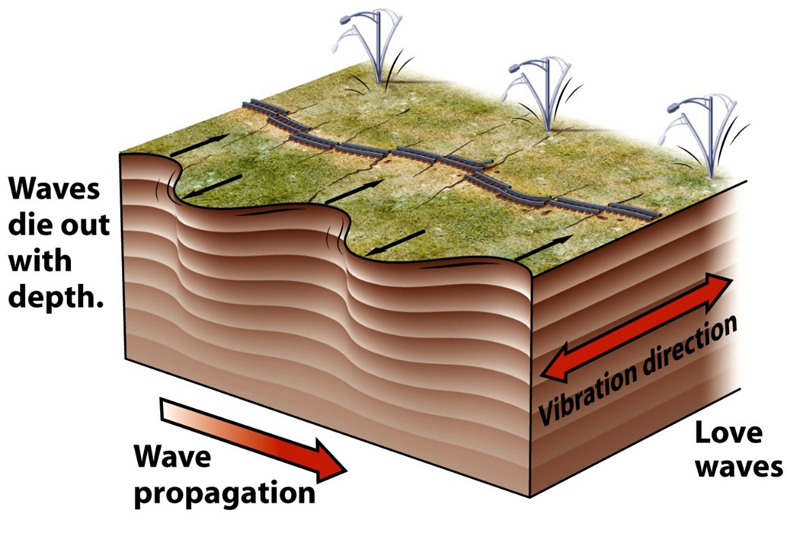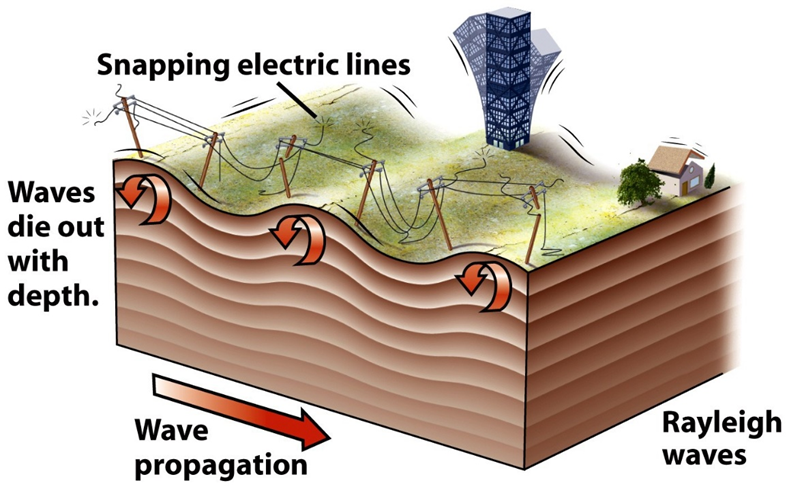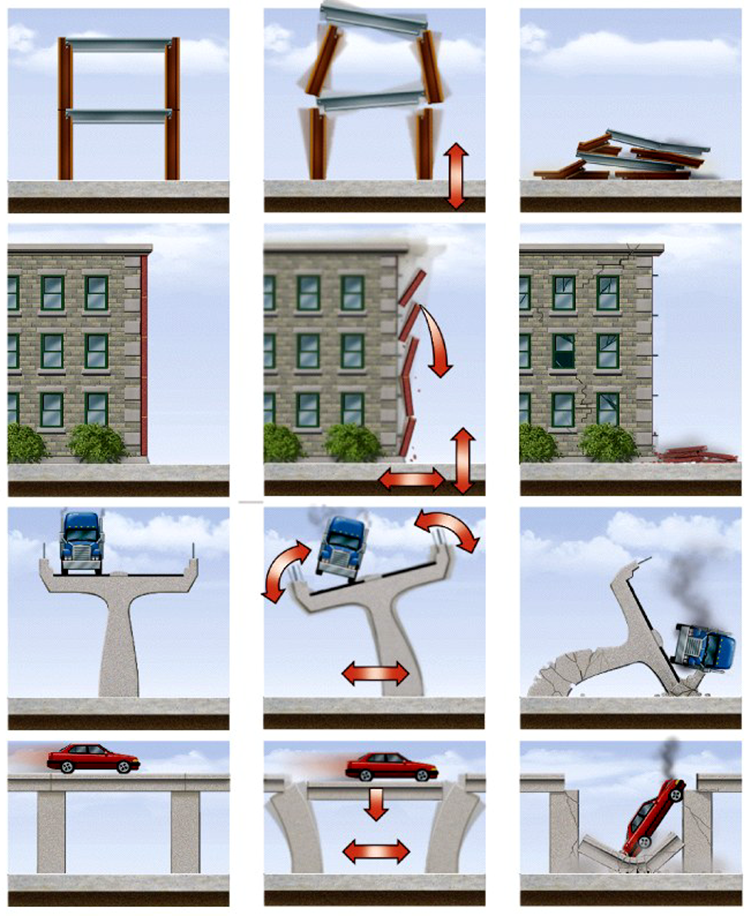Earthquake Damage
| Earthquake damages stem from many factors, including the movement of seismic waves through the surface, the type of rock buildings are built on, and the type of building. First, let's look at seismic waves. Damages from seismic waves |
|
P-waves are the 1st to arrive.
|
 |
|
S-waves arrive next.
|
 |
|
Surface waves lag behind S-waves. Love waves are the first to follow.
|
 |
|
R-waves are the last to arrive.
|
 |
Earthquake Hazards - Ground Shaking
The severity of ground shaking depends on:
- Total energy released
- Distance from the source
- Acceleration
- Nature of the ground material
- Total time of shaking
Results:
- Liquefaction
- Landslides
- Ground Subsidence
- Building Collapse
Building Collapse
Whether or not a building will collapse during an earthquake is dependent upon many factors, including:
- Intensity of the earthquake
- Duration of the vibrations
- Nature of the material upon which the structure rests
- The design of the structure
How does a building or other structure collapse? That depends upon the construction techniques used.
| Slabs disconnect |
|
| Facades delaminate | |
| Bridges topple | |
|
Bridges come apart. |
|
Buildings collide. |
 |
| Masonry disintegrates | |
| Slopes collapse |
Lateral failures – Due to weak ground floors or lack of bracing. Think of a Deck of Cards House: Individual cards stacked to form a house are loose, and easy to fail (unbraced). However, when the cards are taped together, the house is stronger (braced)
How the ground moves is also a factor.Oscillations – Ground shaking typically has frequencies of 0.1 to 30 oscillations / sec.
Resonance occurs when the natural oscillation of a building is the same as that of the ground shaking
